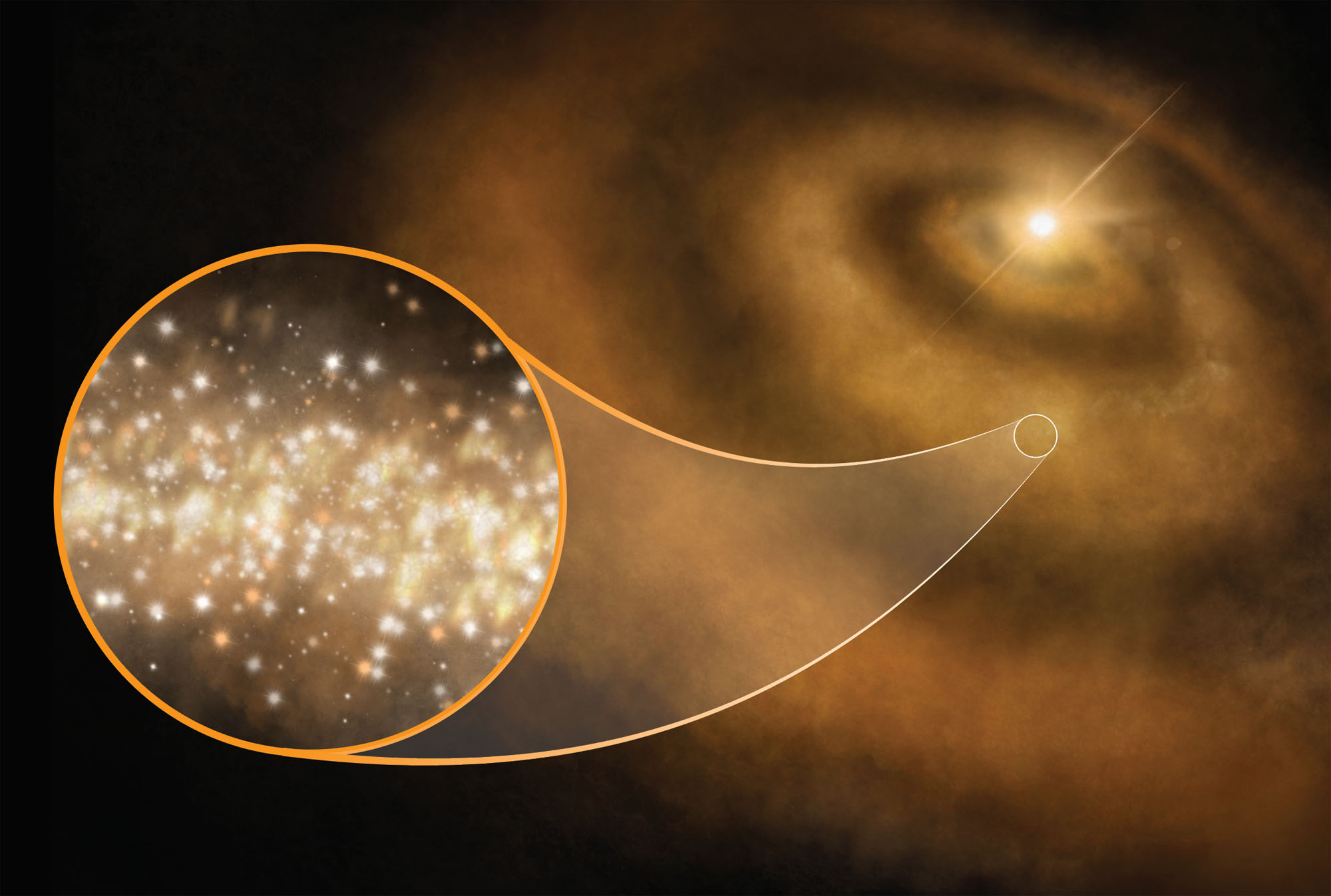Tiny diamonds in star dust
To understand the evolution of the universe, astronomers study the Cosmic Microwave Background (CMB). It is a remnant, an echo of the big bang, and provides answers to how the basic structures of our universe formed. If this radiation is measured, however, it is brighter than predicted. This is because there are also other sources of microwave radiation in the universe.
The portion that exceeds the expected quantity is called AME (Anomalous Microwave Emission). For a long time it was believed that very rapidly rotating tiny grains of dust were the source of AME. In particular, polycyclic aromatic hydrocarbons (PAHs) have long been suspected as the source.
But that was apparently an incorrect assumption, as astronomers have now discovered with the help of the Green Bank Telescope (GBT) in West Virginia (well known to some readers!) and the Australia Telescope Compact Array (ATCA). The two radio telescopes observed the protoplanetary disks of the young star V892 Tau, HD 97048, and MWC 297. They found the signatures of very small carbon crystals, so-called nanodiamonds. In particular, when these are surrounded by hydrogen atoms, they emit exactly the right frequencies to be in the running as a source of AME. Nanodiamonds frequently occur in protoplanetary disks; in the observed systems, they account for up to two percent of the mass of the carbon. They are also regularly identified in meteorites. Nanodiamonds form in superheated vapor of carbon atoms.
This is good news for studying the evolution of the universe. The inflationary epoch shortly after the big bang should have been impressed on the CMB, namely in the form of polarization. This polarization has not yet been proven. The microwave radiation of nanodiamonds is only very weakly polarized and thus does not interfere with the search.
